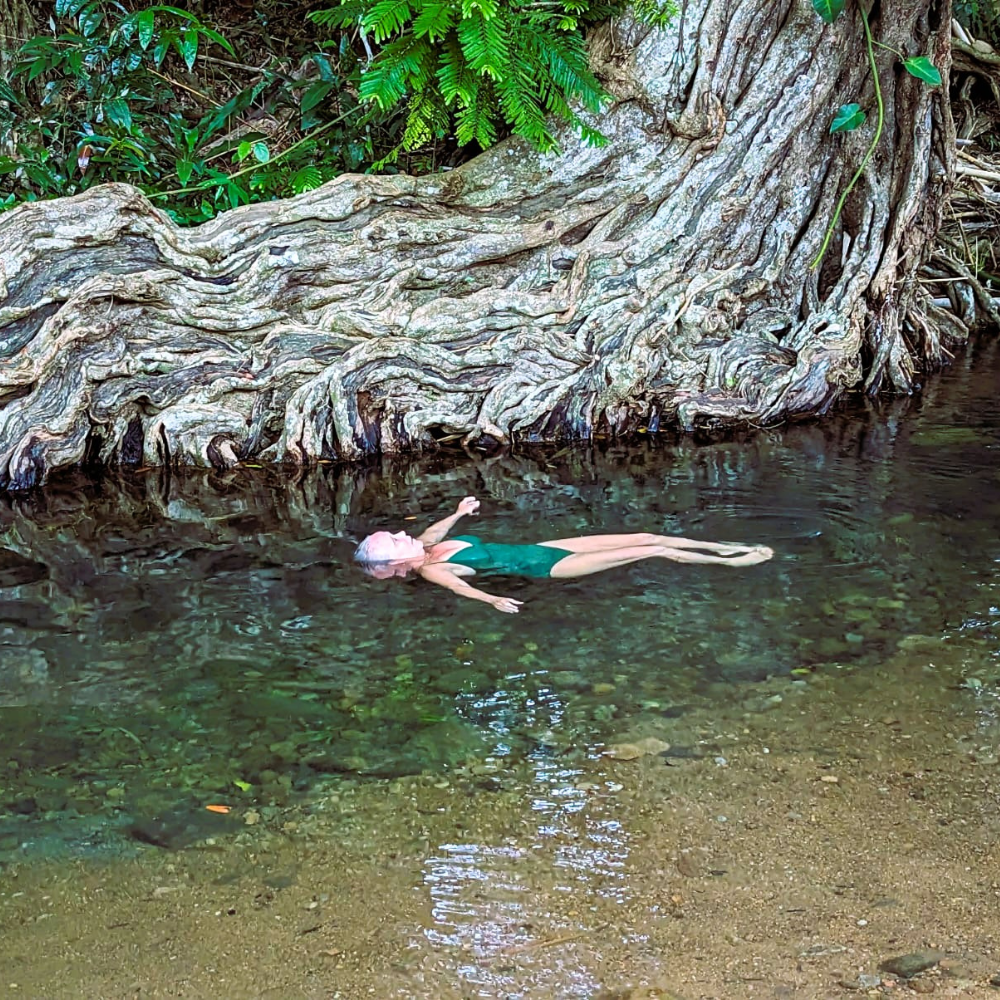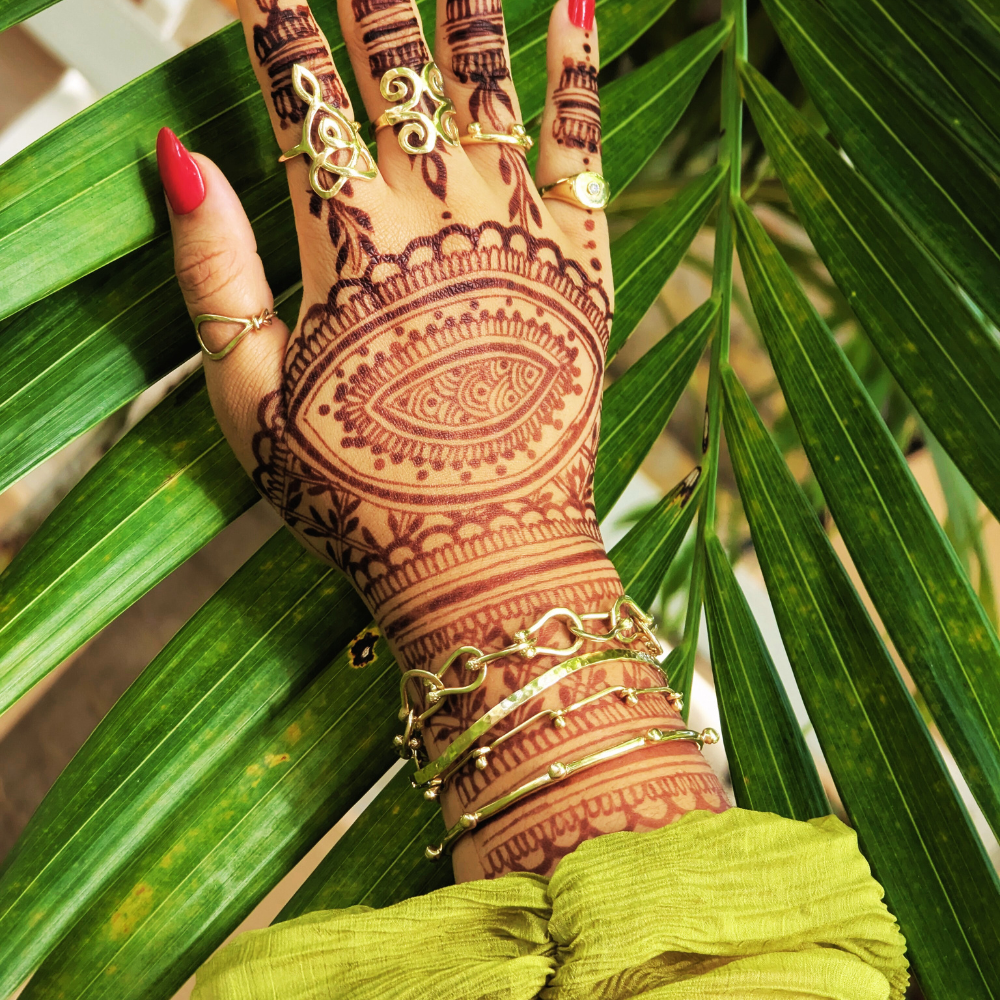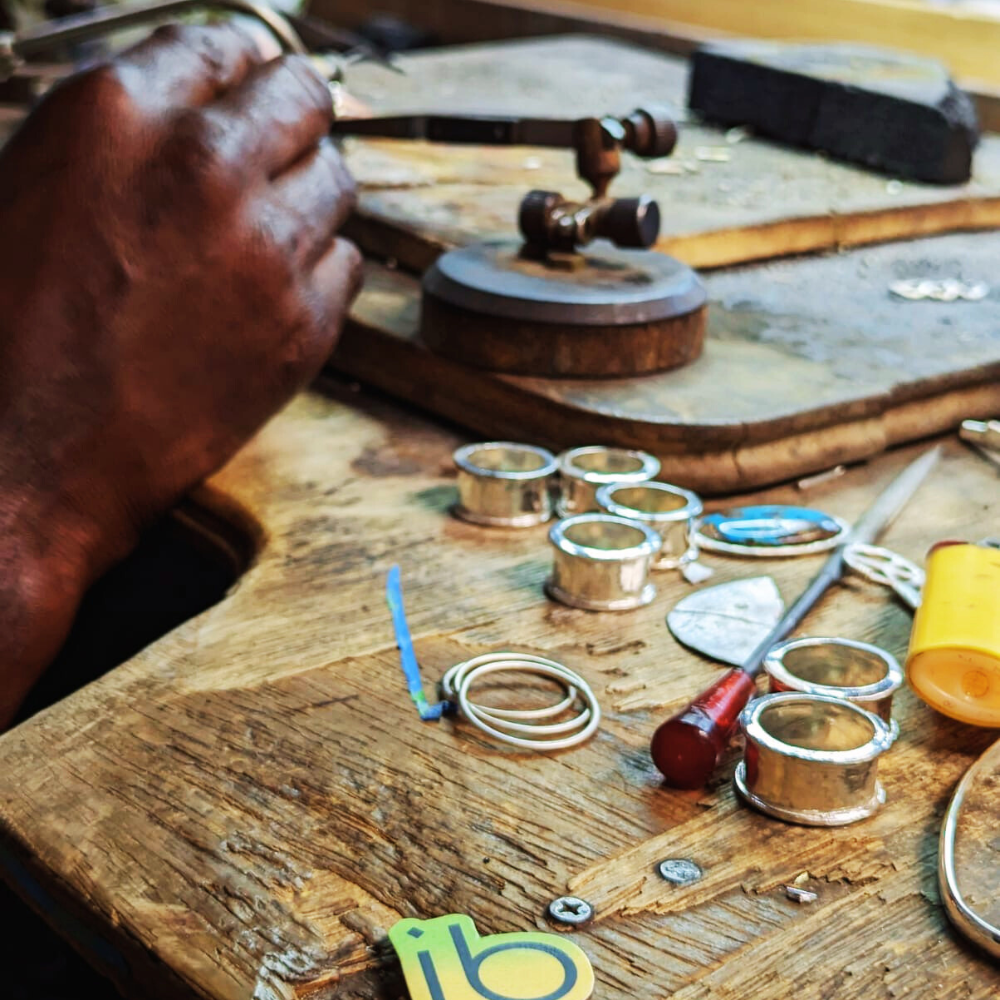Your Cart is Empty
Collections
Virgin Islands History of the West Indian Bangle

We recently posted a blog about the transformation of the West Indian Bangle and its slave origins rooted in our rich Caribbean history. We wanted to dive a little deeper and gain the Virgin Islands perspective so we asked Virgin Islands cultural enthusiast and visual artist, Chalana Brown to provide us some insight.
The West Indies has a complicated history marred by inequity or indeed oppression. Many of the people who live here, the majority of whom are of African descent, carved out opportunities for themselves and adorned themselves despite having little to no financial resources and having their bodies subjected to restrictions.
In accordance with the rhetoric found in Danish texts, in the early half of the eighteenth century, the population of free coloreds was quite small. The number of free coloreds climbed significantly toward the end of the 18th century, from 418 in 1775 to 1148 in 1797 and 5035 in 1815.
The majority of free colored people resided in large towns, in St. Croix primarily Christiansted. Even throughout the Danish West Indies' era of slavery, a distinct elite of Free Blacks developed on St. Croix. These free colored people were mainly artisans, fisherman, tradespeople, seamstresses, maids, and even those who sold vegetables from their own gardens. In the mid-eighteenth century, a piece of Christiansted, Neger Gotted—later known as Free Gut—was set aside for Free Blacks to construct their own homes. Between 1791 and 1815, the town's Free Black population nearly doubled. This act was revolutionary in the Caribbean, doing what free coloreds in other European colonies in the region could not.
However, as history demonstrates, free blacks could never pose a threat to colonial elite sensibilities. Free blacks, particularly ladies, have been recognized for their extravagant gowns and hairstyles, as well as silver and gold jewelry. In no way can the lavishness of the African Diaspora's body be reduced to having existed only during the colonial period; rather, in numerous tribes throughout Africa, details of lavish adornments worn by Africans to beautify their bodies while expressing their culture and identity can be found. The similar thing occurred in the Danish West Indies under slightly different circumstances.
A 1776 Royal Ordinance imposed a variety of regulations on free black people in the Danish West Indies. It was banned for free black women to wear gold or silver, other expensive jewelry, precious stones, and hairstyles. Additionally, they were prohibited from wearing silk stockings, lace, or silk or chintz garments.
Governor Peter von Scholten, the Danish Governor of the Virgin Islands, most unequivocally with the backing of his beloved Anna Heegaard, a free colored woman, advocated to the Danish Monarchy in 1834, despite opposition from local planters who owned enslaved Africans, for several reforms including civil rights for free colored people in the Danish West Indies.
Free colored women were once again allowed to accessorize themselves with bangles and other adornments.
While slavery was abolished in the Virgin Islands and throughout the Caribbean, we discover that many individuals were denied livable pay and working conditions. Nonetheless, we continue to observe a need for women to dress femininely with bangles and earrings. Even the four queens who campaigned for labor equality in the 1878 Danish West Indies, now known as the Virgin Islands of the United States, were documented as possessing earrings and bangles while being placed into jail systems.
Without a doubt, adornment is a significant component of Caribbean culture and identity. Individuals and cultures have historically used fabric, stones, and jewelry to express their identities. From Free Gut St. Croix to Frie Neeriet in Charlotte Amalie to the Barbados Act of 1708, there has always been some type of subjugation on the autonomy of bodies.
However, resistance has always existed, and we see it today when women adorn themselves with bangles and other fashionable adornments that express stories about their landscape and themselves. Our bodies have agency, and we observe the Caribbean people's traditions of passing down textiles and jewelry to future generations. Someone may be wearing their grandmother's bangles and passing on their legacy, while a small child may be overjoyed to receive their first bracelet, which shows their social status. The West Indian Bangle is primarily geared toward a woman's social status, rather than a young child's. The clicking of the bangles indicates that she has been collecting since she was a young woman, and the movement of the bangles as the woman discusses the day's news with her hand identifies something special about the Caribbean experience.
Written by Chalana Brown, Virgin Islands cultural enthusiast and visual artist. Find more of her work on her Facebook and Instagram.
Leave a comment
Comments will be approved before showing up.
Also in Feel Good Blog

Elements of the Soul: A Retreat to Recharge in Dominica
If you’ve been longing for a true reset, our Dominica yoga retreat—Elements of the Soul—is designed to help you restore balance and reconnect with yourself. Known as the “Nature Island of the Caribbean,” Dominica offers the perfect backdrop for a healing journey with its lush jungles, waterfalls, and natural hot springs.

🌿 Blog Post: Introducing the Amani Collection — Jewelry for Your Inner Peace
Our new Amani Collection is a graceful celebration of our interconnectedness. A reflection of the calm we can cultivate and carry with us daily.

ib Workshop: Where all the Magic Happens
Ever wonder where all our jewelry is created? Take a behind-the-scenes look at where the magic of our jewelry comes to life!
















